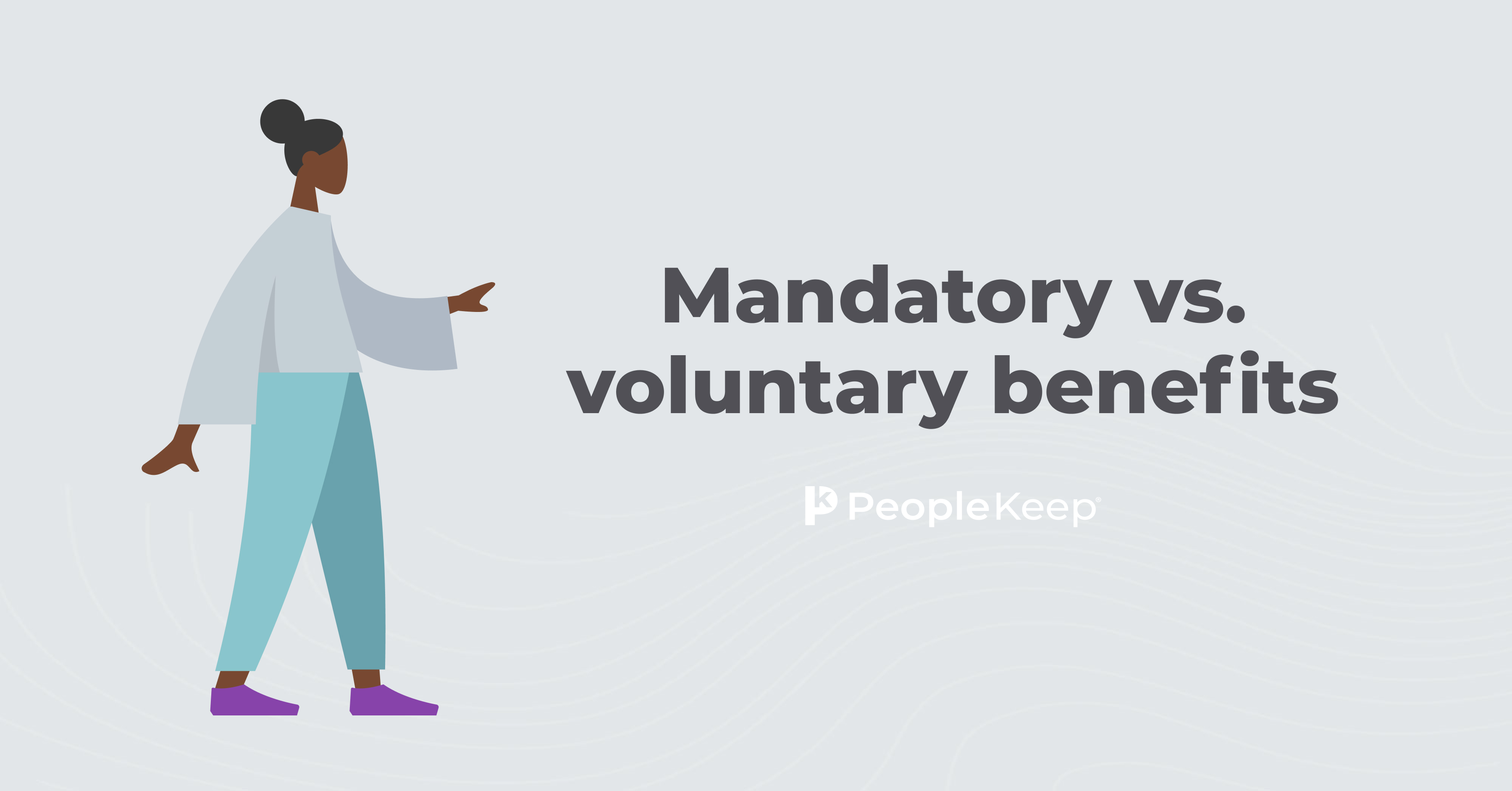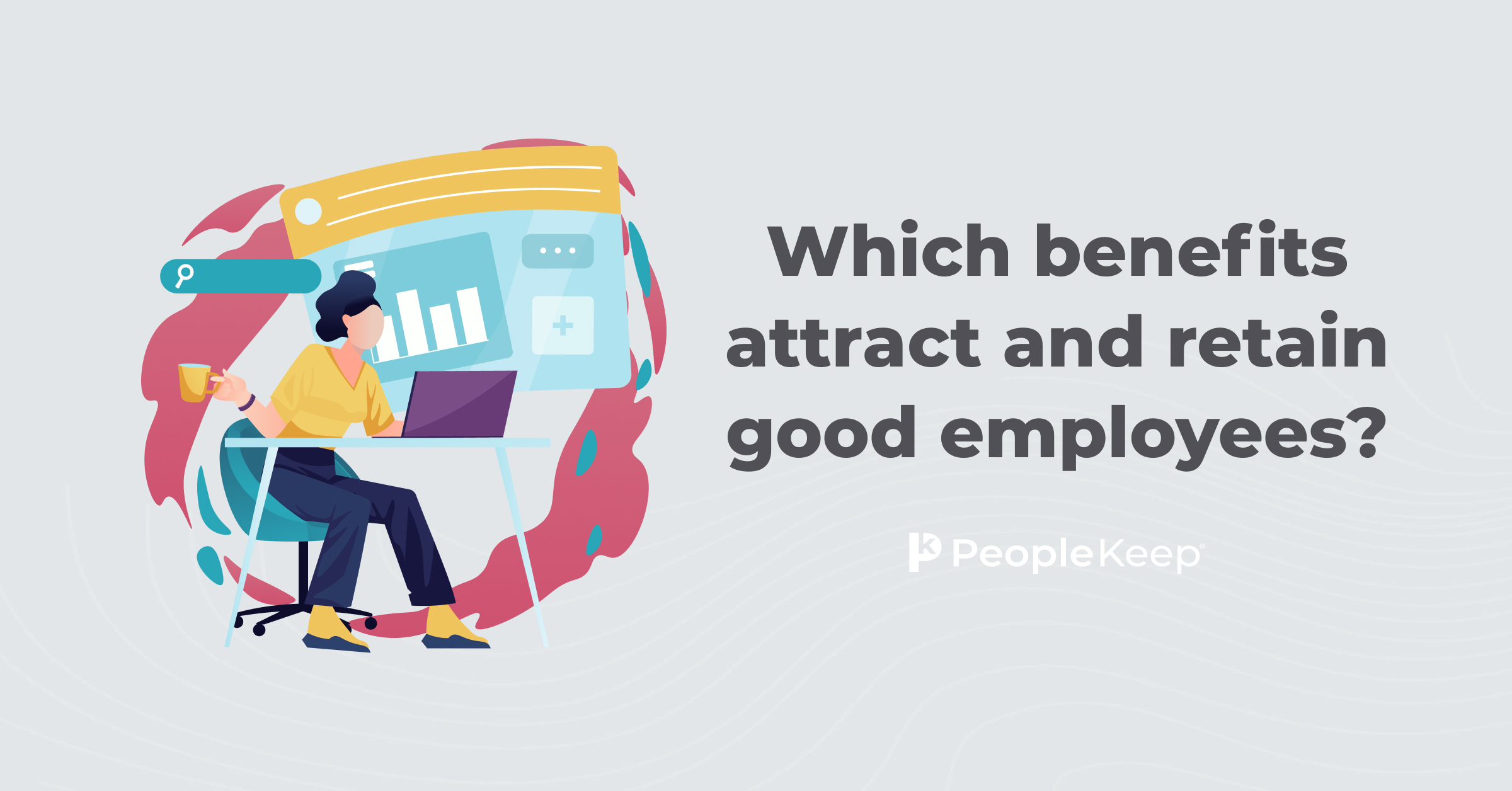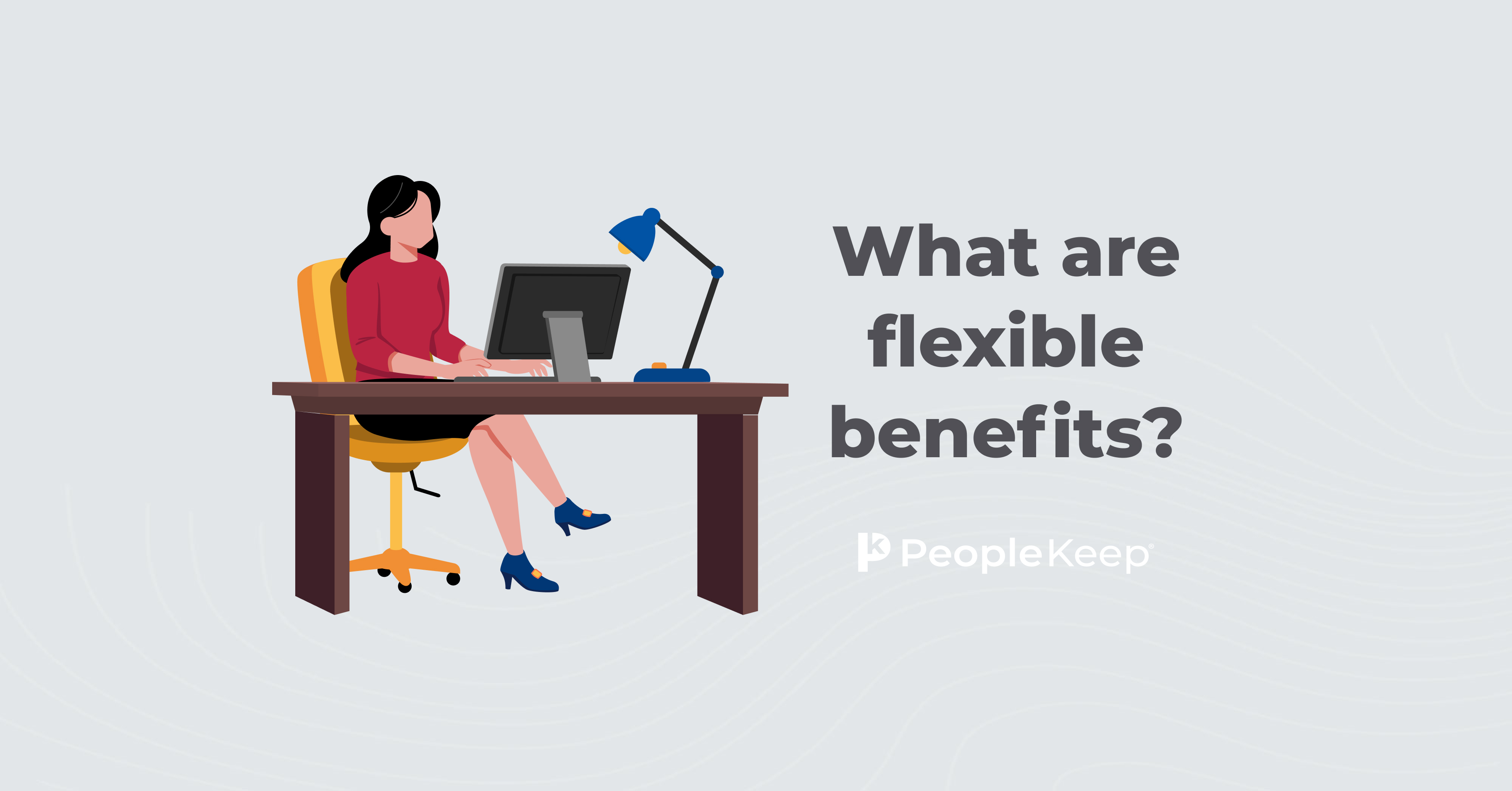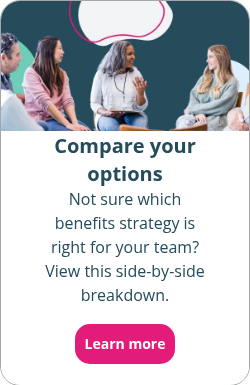Examples of common small business employee benefits
By Holly Bengfort on September 5, 2024 at 8:05 AM
If you're struggling to attract and retain talented employees, your benefits might need some work. Having a standout employee benefits package is essential for any business looking to thrive, but is particularly important for small organizations that can experience higher employee turnover. As of July 2024, the U.S. Bureau of Labor Statistics1 reports that small employers with 10 to 49 employees have a turnover rate of 4.4%, while larger employers with 50 to 249 employees have a turnover rate of 3.7%.
While you may think that only large corporations can afford lavish perks, some top employee benefits can work for a small workforce and budget. However, many small business owners overlook the importance of a well-rounded benefits package. Therefore, they miss out on the chance to create a more engaged and loyal workforce.
In this article, we’ll explore several examples of common employee benefits that can enhance employee satisfaction, entice job seekers, and help your company flourish.
In this blog post, you'll learn the following:
- What types of employee benefits are most appealing to modern employees.
- The two ways you can structure your employee benefits.
- How you can afford to offer healthcare coverage to your employees as a small employer.
Employee benefits examples
If it's your first time offering employee benefits, offering the perks your current and potential employees want is vital. While ping pong tables and bean bag chairs are fun, they may not be the kind of things your employees care about most.
According to our 2024 Employee Benefits Survey, the most popular employee benefits are:
- Health benefits. Your employees want financial security when it comes to their physical health. Health benefits consistently rank as the most-desired employee benefit. If you're not offering them, you're behind the competition.
- Dental insurance. Dental care can be expensive. Dental insurance helps employees with costs for everything from cleanings to extractions. If you want to maintain a competitive edge, include dental benefits in your overall compensation package.
- Vision insurance. Vision insurance helps cover eye care services, including routine eye exams, glasses, and contact lenses.
- Paid time off (PTO). Providing PTO is a great way to help your employees rest and recharge their batteries. It also contributes to a positive work environment. It covers different types of leave, such as holidays, family leave, vacation days, personal time, mental health days, bereavement, and paid jury duty.
- Retirement benefits. According to a Bankrate survey2, 56% of American workers feel like they're falling behind in their retirement savings. By offering a retirement plan to your employees, you can help them plan for their futures. You can offer this benefit to employees through employer-sponsored retirement plans, such as 401(k)s or pension plans.
- Flexible work arrangements. A healthy work-life balance is a major priority for today's workers. You can boost employee morale and productivity by offering flexible hours or remote work options.
- Paid family leave. Paid family leave gives your employees the time they need to tend to their personal lives in specific situations. This can include maternity, paternity, and adoption leave.
- Life insurance. Another attractive benefit for prospective employees is life insurance. They find comfort in knowing their family is taken care of if they pass away. This can help them pay for expenses like burial costs, bills, and living expenses.
- Mental health benefits/wellness benefits. You can take a holistic approach to employee health by offering wellness benefits. This could include mental health counseling, dietitian/nutrition services, or gym memberships.
- Childcare benefits. Many employees with kids find it challenging to balance work and parenting duties. Providing childcare benefits can help them afford expenses related to daycare, after-school programs, or even in-home care.
- Education benefits. Education benefits help your employees grow in their careers. This can include professional development opportunities, student loan repayment, tuition assistance, or tuition reimbursement.
- Disability insurance. Similar to life insurance, disability insurance helps your employees continue to provide for their families if they're unable to work due to an injury or illness.
- Commuter benefits. Commuter benefits can be a helpful incentive for attracting and keeping employees who need to travel to work. You can offer them company vehicles, mileage reimbursement for their personal cars, or transit passes.
Some other types of benefits you can offer your employees include pet insurance, financial literacy programs, employee discounts, and employee stock options.
Example of employee benefits structures
Once you choose the types of employee benefits you want to offer, you're ready to decide how you want to structure them.
In general, employers have two different ways to structure, contribute, and offer benefits to employees:
- Organizational-oriented benefits
- Consumer-oriented benefits
Depending on the type of benefits you're hoping to offer, you can offer all organizational-oriented benefits, all consumer-oriented, or a mix of both. Let's go over each in more detail.
Organizational-oriented benefits
Organizational-oriented benefits are the kind of benefits that are employer-owned and employer-selected. You offer your employees a specific or defined benefit of your choosing, and employees simply choose whether they want to opt in or out. Employees don't get any choice in the type of plan or benefit.
Common examples of organizational-oriented benefits include:
- A traditional group health plan
- A retirement pension
- A formal employee wellness program
Consumer-oriented benefits
Consumer-oriented benefits are the kind of benefits that are employer-funded but employee-selected. Here, you'll offer employees a set dollar amount to spend on their own (also known as an employer contribution). This allows them to customize their benefits to what they want and need. This empowers employees to make their own medical care decisions that make sense for them and their families.
Popular types of consumer-oriented benefits include:
- A medical expense reimbursement plan (MERP), such as a health reimbursement arrangement (HRA)
- A health savings account (HSA)
- A flexible spending account (FSA)
- Employee stipends for fringe benefits like wellness expenses or education
- A retirement savings plan, like a 401(k)
Personalized consumer-oriented benefits
In recent years, personalized benefits have become popular options for offering employees a wide array of perks. Every worker is different and has unique wants and needs. Instead of offering traditional one-size-fits-all benefits, you offer your employees a monthly allowance and empower them to use it on the things that matter most to them. This makes them highly attractive benefits to both job applicants and current employees.
Personalized health benefits
While employers traditionally offer medical insurance as an organizational-oriented benefit, more employers are putting healthcare decisions back into the hands of their employees. They can accomplish this by offering HRAs to cover their medical expenses.
An HRA is a formal, IRS-approved health benefit that offers more flexibility for employees and more budget control for employers.
Through an HRA, you can reimburse your employees for their individual health insurance premiums and more than 200 types of qualifying healthcare costs with pre-tax dollars.
Three of the most popular types of HRAs are:
- The qualified small employer HRA (QSEHRA)
- The individual coverage HRA (ICHRA)
- The group coverage HRA (GCHRA), also known as an integrated HRA
With an HRA, your employees can reduce the financial burden or costly medical bills and keep themselves and their families healthy and happy.
Employee stipends
If you want to create attractive benefits packages that appeal to highly skilled workers and retain current employees, you need to offer a wide range of benefit offerings. A comprehensive benefits package full of traditional perks and wellness benefits can be costly. Thankfully, there's an easier way to provide different kinds of common employee benefit offerings.
With employee stipends, you can give your workers a monthly allowance to cover expenses. This can be for things such as remote work, gym memberships, tuition, and other perks.
For example, let's say you decide to offer eligible employees a $400 monthly allowance for health and wellness expenses. Your employees can decide how they want to split their allowance. They could use the money on gym memberships, therapy, a spa day, or any other expenses. A stipend can improve their work-life balance and well-being.
This empowers your employees to use their monthly allowance on what matters most to them while you retain complete cost control.
While most stipends count as taxable income. But some fringe benefits, such as tuition reimbursement and mileage reimbursement, are tax-free. You'll want to consult with a tax professional to determine your tax liability based on the benefits you choose to offer.
Conclusion
When it comes to attracting and retaining talent, small businesses often need to offer more than just competitive salaries. Employee benefits play a crucial role in enhancing job satisfaction and fostering loyalty among staff. By building out your employee benefits package with the popular benefits listed in this article, you'll be well on your way to improving employee retention and recruitment at your organization.
If you're ready to offer personalized mandatory and voluntary benefits to your staff, PeopleKeep can help. Our HRA administration software makes it easy to set up and manage your health benefit in just minutes each month.
This post was originally published on November 8, 2018. It was last updated on September 5, 2024.
- https://www.bls.gov/news.release/pdf/jolts.pdf
- https://www.bankrate.com/retirement/retirement-savings-survey/
FAQs about employer benefits packages
What is usually included in an employee benefits package?
Employee benefits packages typically include:
- Health insurance
- Retirement savings plans
- Paid time off
- Flexible spending accounts
- Additional perks such as tuition reimbursement, wellness programs, and flexible work schedules.
Instead of offering a group health plan, organizations can offer a health reimbursement arrangement (HRA).
What benefits are always paid by the employer?
Employers typically pay for all or a portion of benefits. This often includes health insurance, retirement savings plans, and worker's compensation. These are considered essential benefits, and employers offer them as part of their benefits package. Other benefits that employers often pay for include disability insurance, life insurance, and dental and vision coverage.
It's important to note that the specific benefits and the extent of coverage can vary depending on the company and the industry in which it operates.
Employees may also be responsible for a portion of costs, like with health insurance.
What do employees want in a benefits package?
PeopleKeep's 2024 Employee Benefits Survey found that employees value health benefits, dental insurance, paid time off (PTO), retirement benefits, and vision insurance the most. Employees also increasingly value mental health and wellness benefits.
Check out more resources
See these related articles

Mandatory vs. voluntary benefits
Curious about the difference between mandatory and voluntary benefits? Explore how each type supports employees and boosts your overall benefits package.

Which benefits attract and retain good employees?
Discover the key employee benefits that can attract and retain top talent and create a competitive benefits package that keeps employees engaged and loyal.

What are flexible benefits?
Learn what flexible benefits are and how they let employees choose the perks that matter most. Discover examples and how they support retention.



